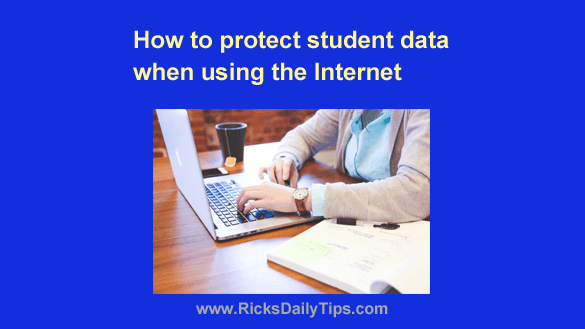 Because of the COVID-19 pandemic, most students have taken up online learning. In fact, online learning is the new norm for most students.
Because of the COVID-19 pandemic, most students have taken up online learning. In fact, online learning is the new norm for most students.
Through video conferencing apps and other tech tools, teachers can now engage their students remotely.
However, the adaptation of online learning brings up a new set of challenges.
Now more than ever, students’ data are susceptible to cyberattacks. Therefore, there’s a need for personal data protection and student privacy in schools and at home.
Canadian students and parents must learn how to protect data online to prevent it from falling into the hands of cyber-gremlins.
This post provides a few data privacy tips to protect students online. But first, let’s define cybersecurity.
What is Cybersecurity?
Cybersecurity involves protecting internet-connected systems, including hardware, software, and data from cybercriminals.
Today, cybersecurity is vital to any organization because of the rising number of cyberattacks each year. At school, administrators and IT teams must be vigilant to prevent student’s data and privacy from being breached.
Parents at home should take the necessary measures to prevent their children’s data from getting compromised when they visit various learning or social media sites in Canada.
Canadian students must also learn the most common cybersecurity threats, including eavesdropping.
When researching or doing your assignment online, it’s wise to use safe and secured websites approved by the schools. And if you need help with your assignment, use Edubirdie research paper writing service, a safe and reliable service. This service delivers quality, plagiarism-free assignments at the best prices to help you improve your overall grades.
Besides that, it’s among the services that value student safety and privacy online.
It doesn’t share your information with third-party websites or organizations. As a result, a Canadian student’s personal information and financial data remain protected.
Basic Cyber Security Tips
Here are four basic cybersecurity tips students, parents, and educators can use to prevent student data breach:
1 – Always Use Encrypted EdTech tools
A student visiting an education website must ensure that his or her data gets stored and transmitted securely. The best way to achieve this is to look for the secure link icon in the URL bar.
Alternatively, you can check if the URL of the website has “s” after the “HTTP.”
If the website meets the listed rules, then you can safely use it. Even if an unauthorized person intercepts your data, he or she will not access it since it will be encrypted.
Sadly, you can’t confirm if a phone app protects your data or shares it with third-party websites, especially Android apps.
2 – Look for Privacy Policy
We understand privacy policies are often overwhelming, but it’s wise to go through them. Read through the policy and check the website stand on student data privacy.
If an app or website you’re using lacks a privacy policy, consider them a no-go zone.
It’s a good idea to only work with tools and services that meet your school’s student data privacy standards.
If you’re not sure about the website or app, consult your school or a privacy expert.
3 – Use Strong Passwords and a VPN
Educators and students who access the internet via Wi-Fi networks in public places like coffee shops should always use a virtual private network (VPN).
A VPN protects you from hackers trying to gain access to the information you’re viewing or sending.
Use strong passwords for your accounts and avoid registering to accounts via public computers. Also, don’t save your login information or leave your laptop unattended with sensitive information on the screen.
After finishing your online class, clear any generated data by deleting them or deactivating your account.
4 – Educators should be transparent with parents and students
Teachers and school administrations must be upfront with both parents and students. They should inform parents about the ed tools used and how to access them.
Also, schools should give parents the chance to go through the tools’ privacy policy and see the data collected from their kids.
Schools should also involve a parent in the development of Canadian student’s data protection and privacy norm. They need to inform parents about the steps teachers are undertaking to protect student privacy online.
Conclusion
More and more students are learning online today.
This is a good thing since it increases their productivity and helps teachers to engage better with students.
But the adoption of new technologies brings about a new set of safety, security, and privacy challenges, especially for students.
Therefore, it makes sense for schools, parents, and teachers to learn and understand how they can protect students online. This way, they can prevent sensitive student data from falling into the wrong hands.
References
https://www.edsurge.com/news/2018-12-10-six-ways-to-protect-student-data-and-prevent-cyberattacks